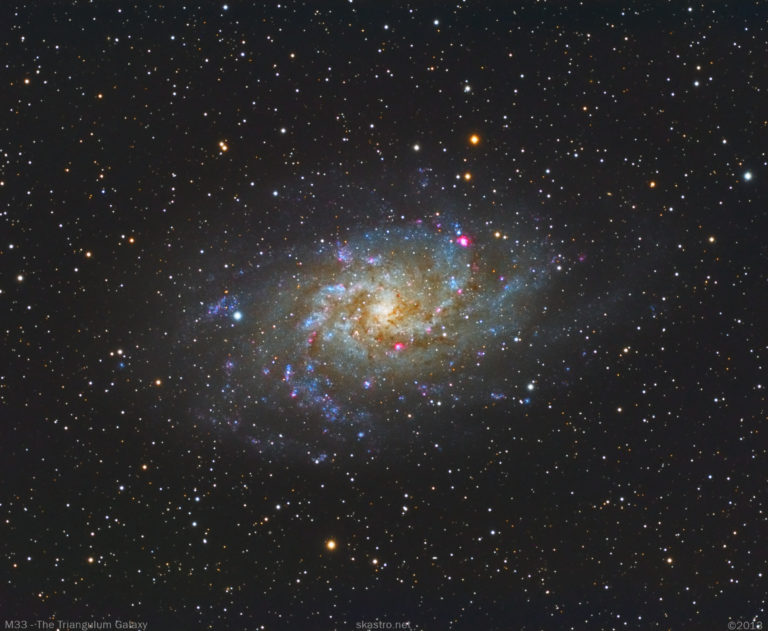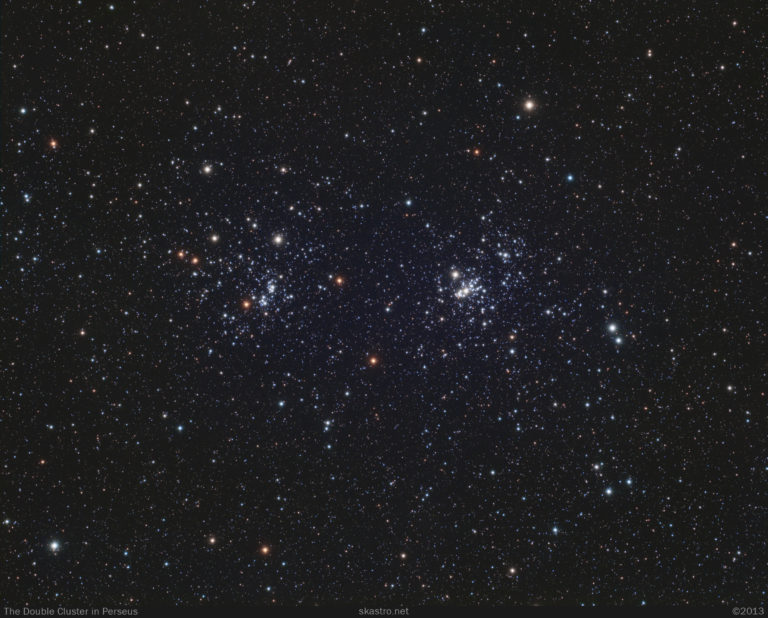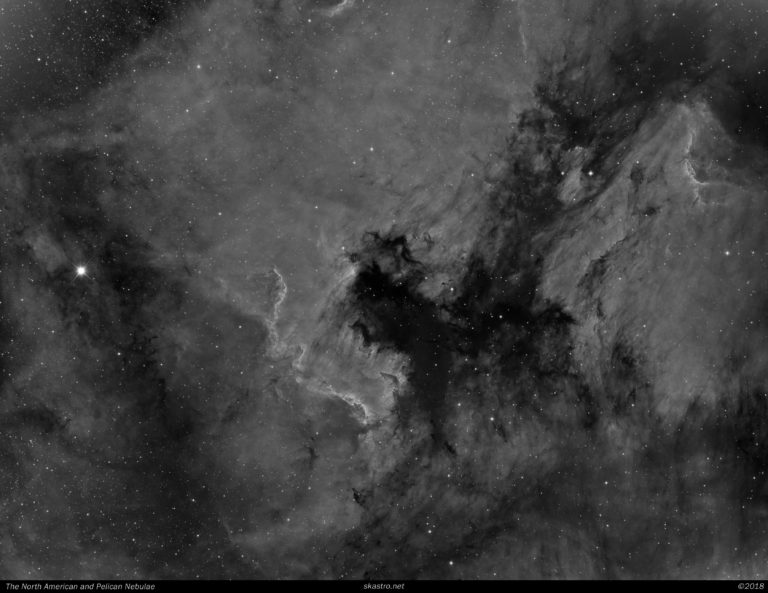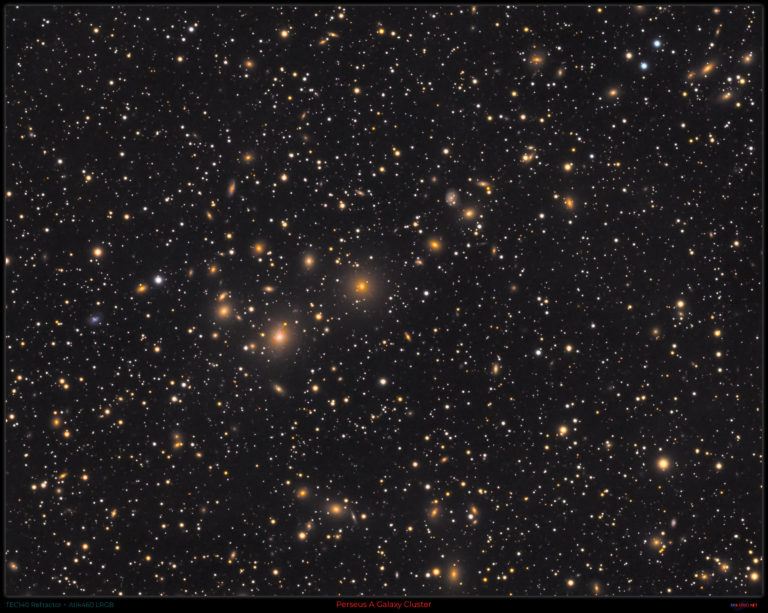M33 – The Triangulum Galaxy This is about two hours each of LRGB (in each filter) with the Takahashi FSQ85 telescope and Atik 460 CCD camera with Baader LRGB filters. I did not use a Ha filter on this image. The data was collected on 29th November 2013 and it was the second light of the telescope (first light being The Double Cluster here). The telescope performs superbly and is very well colour balanced.At a distance of about 2.8 – 3.0 million light years, M33 is the most distant object that can be viewed by the unaided eye and is visible in a dark sky setting as a very tenuous patch of light. Being a face-on galaxy, it has rather low surface brightness and it lacks a bright central core making it quite hard for beginners to find as they expect to see something much brighter and more colourful. The…
The Double Cluster in Perseus The Double Cluster is located in the constellation of Perseus, near the border with Cassiopeia and is composed of the two Open Clusters NGC869 and NGC 884. They are visible faintly to the naked eye on a dark night and a wide field eye piece shows them superbly in the telescope as does a pair of binoculars if you hold them steady. The clusters are very distant from us at about 7500 light years and are located outwards in the Perseus spiral arm of the galaxy. Were they as close as The Pleiades (at 450 light years) they would dominate the night sky! The above image was taken with my Takahashi FSQ85 refractor and Atik 460 CCD camera with Baader RGB filters and contains 45 minutes of exposures in each of the RGB channels. I took these exposures in 2013 and this was the first…
A famous string of galaxies in the constellation of Virgo, named after the astronomer Benjamin Markarian who first discovered their common motion. The chain contains several Messier catalogue objects and is visible in the late winter and spring in the Northern Hemisphere. The galaxies are located between 65-75 million light years away and are nice objects to observe with a telescope if you can do so from a dark sight.This image was created from a data set acquired in Spring 2019 with my FSQ85 refractor.Image is centred on “The Eyes” of NGC4435 and NGC4438 just below dead centre of the image. At the bottom is the monstrous supergiant elliptical galaxy M87, the most massive object in the local universe harbouring the famous black hole recently imaged with the event horizon telescope. Markarian’s Chain in Virgo Below is an inverted version that help show the galaxies with more contrast. Inverted Version…
The North American Nebula and the adjacent Pelican nebula to the right of it are popular objects of the summer and autumn sky in the Northern Hemisphere. Both of these objects are aptly named because the nebula to the left really does look like the continent of North America being looked at by a pelican to the right!This post discusses a version of these objects in the light of Hydrogen Alpha 3nm only. You can see the vast amount of detail that is emitted at this wavelength by the clouds of hydrogen that the nebulae are composed from.This picture is composed of 48 x 600s exposures with a Takahashi FSQ85 refractor and Moravian G2-8300 CCD camera with an Astrodon 31mm 3nm Ha filter and the Takahashi 0.73 reducer. The image discussed here is a pure Ha monochrome image but I also combined this data set with RGB colour data as…
The Perseus Galaxy Cluster (Abell 426) is one of the most massive known objects in The Universe. It is a supercluster of galaxies with thousands of individual members located between 230-280 million light years away. The galaxies are located within a vast cloud of enveloping gas, the gas being much more massive than the total mass of the galaxies themselves. This area is very important for physicists testing the theory of relativity. It is clear from the red patches on the main Perseus galaxy itself (NGC 1275) slightly to left and bottom of this images centre (at the eight o’clock position) that something dramatic is happening inside this galaxy. Perseus A Technical Information Imaged from my backyard observatory in Nottingham, UK with my TEC 140 refractor and Atik 460 CCD camera with Astrodon LRGB filters between October 2019 to January 2020. The image was created from 20 x 900s luminance exposures…




